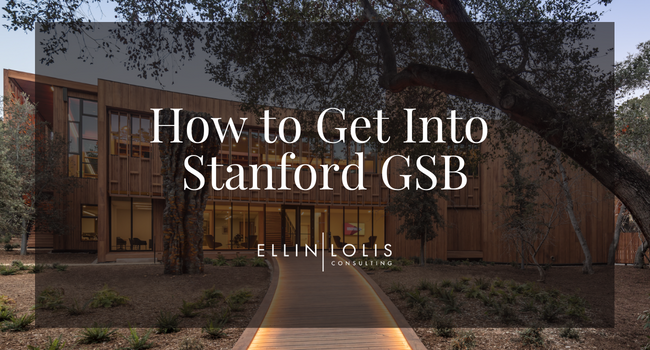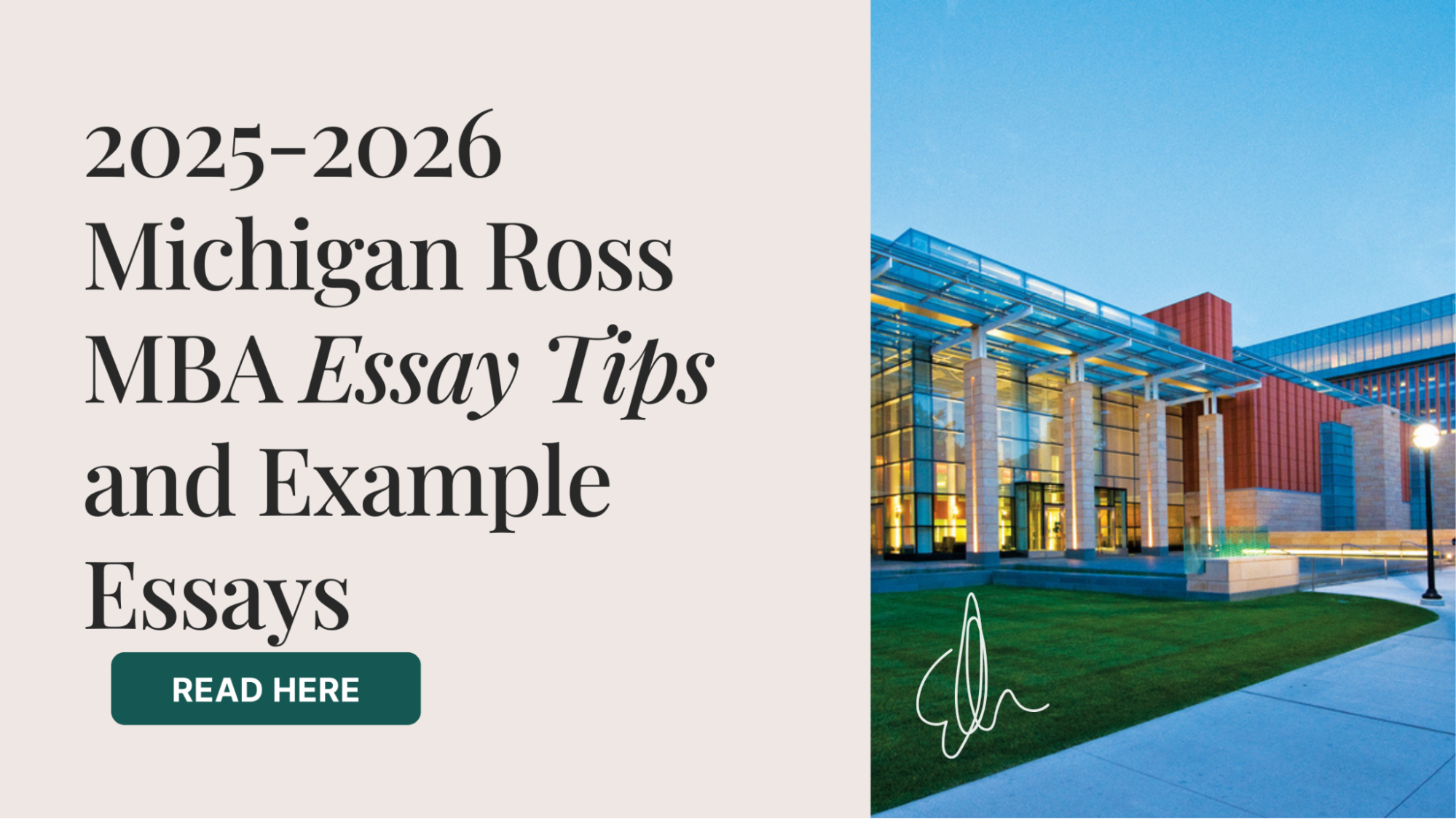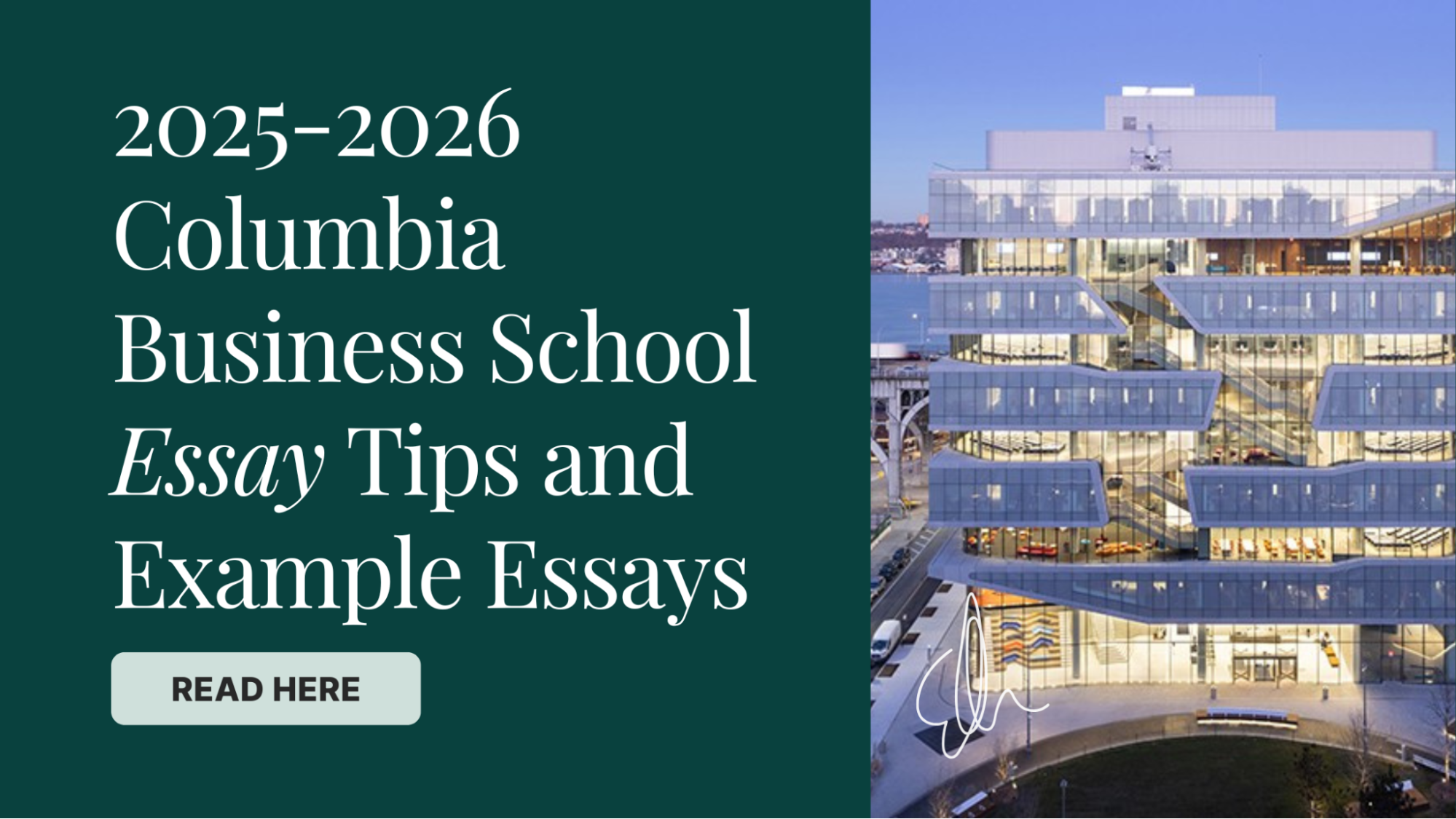Update: This article was originally posted on August 1, 2022. It has been updated with new information and tips below.
Stanford GSB is known for its dedication to preparing change-making leaders, excellent reputation amongst employers, and innovative curriculum. Considering that GSB offers one of the best MBA programs and receives more than 7,000 applications per year, earning a spot at this school requires you to really stand out from the competition.
In this guide, we will go through how to get into GSB. While many applicants think that simply marketing themselves well is enough to gain admission, successful applicants are the ones who understand a) who Stanford is looking for, b) how GSB’s MBA program, community, and opportunities fit their profile and goals, and c) how to prepare a GSB-specific essay and interview. Read on for our expert advice on how to master these three things.
Understand who Stanford is looking for
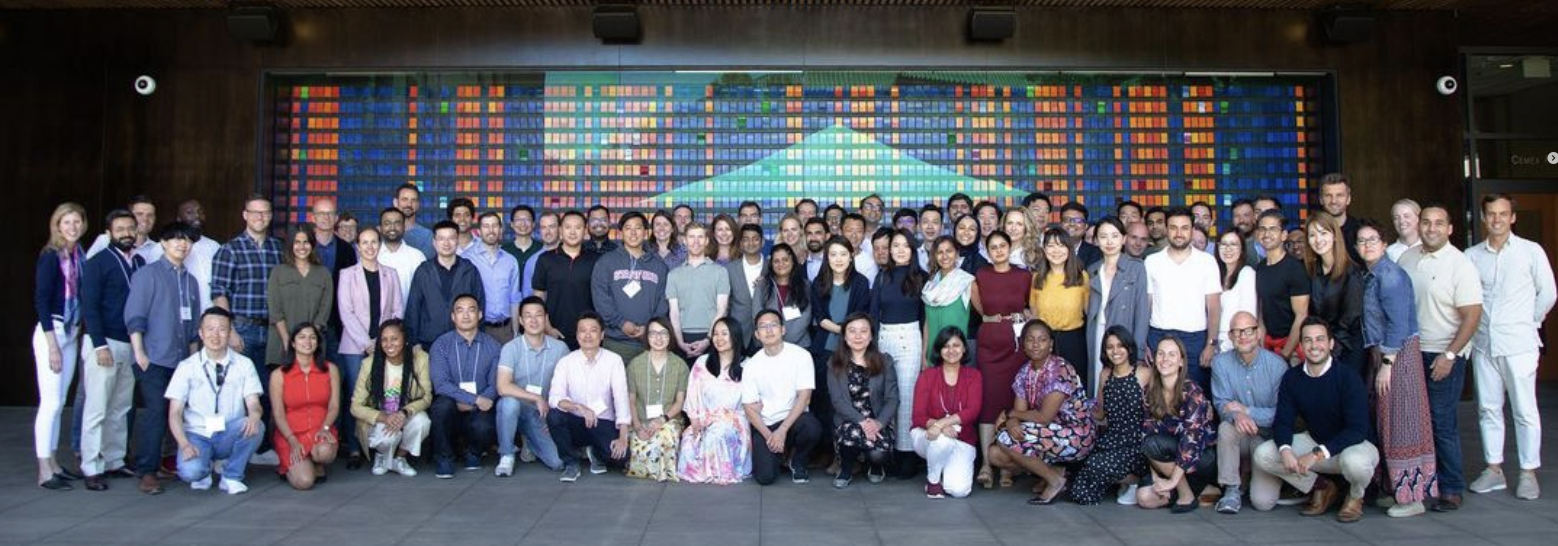 (Photo courtesy of @stanfordgsb on Instagram)
(Photo courtesy of @stanfordgsb on Instagram)
“At Stanford, we strive to ensure that a diversity of cultures, races and ethnicities, genders, political and religious beliefs, physical and learning differences, sexual orientations and identities is thriving on campus. Such diversity will inspire new angles of inquiry, new modes of analysis, new discoveries and new solutions … Our diversity ensures our strength as an intellectual community. In today’s world, diversity represents the key to excellence and achievement.” – Persis Drell, Provost, Stanford University
Every year, Stanford GSB’s admissions team selects around 430 students from over 7,000 applications for the honor of joining their prestigious MBA program. Though what “fits” at Stanford is constantly evolving, they do tend to admit slightly younger applicants (with an average of 5.1 years of work experience). Stanford also works hard to admit a highly diverse group of students.

Applicants offered admission also tend to have outstanding GMAT scores (the average for the Class of 2026 was 738) or exceptional GRE scores (the average for the Class of 2026 was 164Q and 163V).
Nonetheless, that does not mean that Stanford looks simply for good test-takers. Instead, they want a talented, principled group of leaders who will use business to positively impact the world.
According to Stanford’s Admissions team:
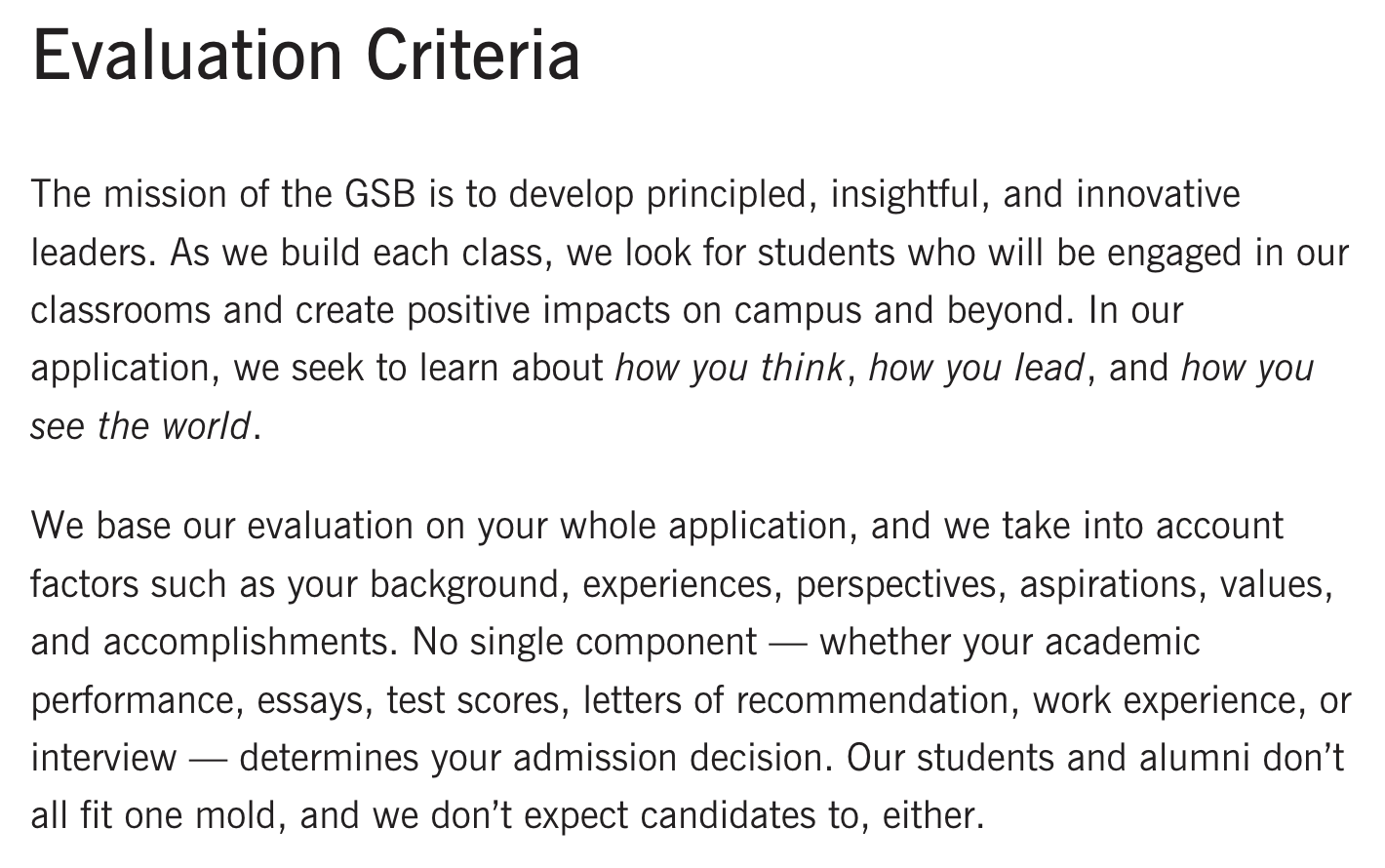
Though there is great diversity in the class, some of the key characteristics GSB looks for in applicants are:
- Intellectual vitality
- Demonstrated leadership potential
- Personal qualities and contributions
Stanford also states:
“We always remember that there is neither an ‘ideal’ candidate nor a ‘typical’ Stanford MBA student. You should remember this, too. While the Stanford GSB community does include students who have pursued incomparable opportunities, most Stanford MBA students have excelled by doing ordinary things extraordinarily well. What you make of an experience matters to us, not simply the experience itself.”
So, if this sounds like a community in which you’d be right at home, you’ll have to think of the ways in which you align with the main characteristics of Stanford’s students. This means forming your business school brand and then focusing on the aspects of that brand that align with leadership, analytical aptitude, and a desire to enact positive impact.
Know GSB’s program and how you can use it
The second thing you must do to get into GSB is to know the MBA program and how it applies to your career goals. If you want to get into Stanford, you really need to show the admissions committee why it’s a good fit for you (and why you’re a good fit for the community too)!
While you will have to do your own research to find the specifics of what aligns specifically with your goals and profile, below we are highlighting some of the main aspects of Stanford’s MBA program so you can be informed about what makes it unique in comparison to other business schools.
GSB’s innovative and globally-focused curriculum
GSB’s MBA curriculum is focused on preparing students to develop and, eventually, implement big visions for their careers. As a result, the curriculum is highly personalizable.
During the first year at GSB, students focus on gaining general management knowledge and global exposure. Through the core courses offered during this time, students are exposed to practical experience and detailed feedback on their management approach and style from classmates and leadership coaches. Students have the opportunity to make choices in many of the core courses, calibrated to their own skills, experience, and goals.
First-year MBA students are also required to participate in and complete one Global Experience to fulfill the Global Experience Requirement (GER). During the GER, students learn about, practice, and develop their global management skills.
Year two is when GSB students really have the chance to customize their academic experience through electives (which will be almost all courses during this year), seminars, a joint or dual degree, and courses at other Stanford schools. While Stanford’s electives are constantly updated according to changes in the business environment, the social sector, and students’ interests, elective topics include: entrepreneurship, global/strategic management, political economics, healthcare, education, and energy.
Experiential learning opportunities
There are a number of experiential learning opportunities available to GSB students. This includes the global experiences and internships, as well as the Social Entrepreneurship Program and Stanford GSB Impact Fund.
There are also many labs and research initiatives that allow students to pursue projects in their particular areas of interest during their MBA studies.
The Behavioral Lab is an interdisciplinary laboratory that supports students to conduct research that uses human participants for topics from organizational behavior and behavioral marketing to behavioral economics.
Other labs and initiatives include the Cities, Housing, and Society Lab, which brings together students, faculty, and industry/government stakeholders across disciplines to look into how geographic place, labor markets, and public policy influence households’ economic lives and inequality, and the Golub Capital Social Impact Lab, which focuses on digital technology and social science research to improve the effectiveness of leading social sector organizations.
Supportive community
With plenty of clubs and extracurricular activities available for GSB students to participate in, there are many ways to refine leadership, networks, and skills while studying at Stanford.
In addition to experiencing GSB’s tight-knit student body, MBA students and grads have access to the school’s one-of-a-kind alumni community. GSB’s alumni network has more than 30,000 members and over 60 global chapters. As the school’s website says, “They are generous with their time, supportive of your efforts, and famously responsive.”
Whether you are a student or an alumna, you also have access to the GSB Connect network where you can find and connect with other members of the GSB community who have volunteered to speak with one another about their career goals. Using GSB Connect, you can connect with alumni who may be in the industries or companies that you are aiming to be in, seek mentorship, or even find career collaboration opportunities.
Looking for more than just a summary of the Stanford GSB MBA?
Luckily, we’ve created a complete guide on Stanford, including program specifics, MBA class profile, and Stanford post-MBA salary and employment information.
Additionally, we have dozens of sample Stanford MBA essays (including optional essays!) that got our past clients into Stanford, plus essays for numerous other top schools, all in one place. Click to join!
Prepare a winning Stanford GSB application
Your admissions essays are one of the most critical components of your Stanford GSB application. They’re your chance to share your unique perspective, demonstrate your values, and show how you align with the school’s mission to educate leaders for business and society. These essays aren’t just about recounting experiences. They’re about weaving a narrative that highlights who you are at your core and the impact you aim to create.
According to Stanford GSB’s admissions team, “Essays help us learn about who you are rather than solely what you have done. Other parts of the application give insight into your academic and professional accomplishments; the essays reveal the person behind those accomplishments.”
That’s why we’ve crafted a comprehensive guide to navigating Stanford GSB’s MBA essay questions, complete with actionable advice and examples.
Remember that authenticity, reflection, and clarity are your most powerful tools as you approach this section of your application.
Prepare a winning interview
After you’ve submitted your application and essays, you must wait to see if you get an invitation to interview. If you do get to the interview phase of the GSB application process, congratulations! This is an exceptional achievement.
Stanford interviews are conducted by alumni, and you are interviewed blind (meaning that the interviewers do not have access to your application, only your CV). They usually last 45-60 minutes but can go longer. Interviewers tend to be very friendly yet still highly rigorous. In the interview, the alumnus or alumna is still trying to gauge how solid your motivations for wanting to pursue an MBA are, how deeply you have thought about why the Stanford MBA is right for you, and if you fit well with the program’s focus on self-reflection.
Interviewers often ask many standard MBA interview questions, as well as numerous follow-up questions intended to probe your motivations for making certain decisions.
Our clients who have interviewed with Stanford in the past say that the interviewer was very friendly and demonstrated a genuine interest in their answers.
For some clients, questions were far more personal in nature, covering topics like their childhood and family upbringing. Other clients reported their interview was more focused on educational and professional achievements, so make sure you’re ready for anything when you interview with Stanford.
To see a list of potential interview questions you can prepare for, click here.
Make sure you prepare a successful Stanford GSB application
Getting into the Stanford MBA is no easy feat.
With multiple essays, numerous letters of recommendation, and admissions interviews, a successful application to Stanford requires that you carefully think about all aspects of your profile and craft the most cohesive, compelling narrative possible.
Starting from scratch, though, can leave many applicants like you feeling confused and uncertain that they are developing an application that will impress the Stanford admissions committee.
That’s why we created our MBA Resource Center, which includes everything you need to get into the Stanford MBA, all in one place. This includes dozens of sample essays, recommendation letter questions and guides, sample letters of recommendation, MBA CV templates, interview mock sequences, and even sample answers to the most common interview questions.
In short, our Resource Center puts the Ellin Lolis Advantage into your hands, giving you exclusive access to the materials we used to help maintain our 98.9% success rate.
The Ellin Lolis MBA Resource Center has helped countless applicants around the world get into Stanford. Sign up today to put this competitive advantage to work for you.
Real MBA Essays That Got People In
School-specific sample essays that got our clients accepted

